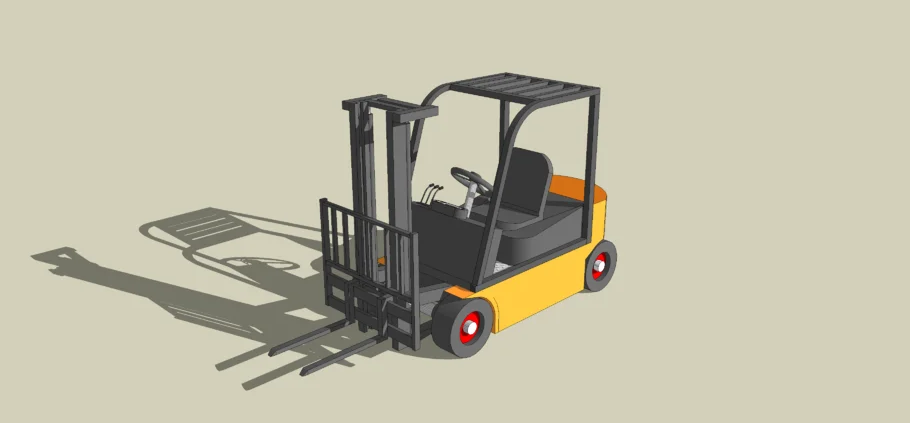Forklift Battery Watering System: What It Is, Why It Matters, and When It’s Time to Move On
In industrial and warehouse operations, lead-acid battery-powered forklifts remain a workhorse. However, with great power comes regular maintenance — and one of the most critical (and often overlooked) aspects of maintaining these batteries is battery watering.
To streamline this task, many facility managers turn to forklift battery watering systems. These systems automate the otherwise tedious process of topping off battery electrolyte levels and are designed to improve safety, efficiency, and battery longevity.
But how do these systems work? Are they worth the investment? And is there a smarter alternative that eliminates watering altogether?
Let’s dive in.
- What Is a Forklift Battery Watering System?
A forklift battery watering system is a specialized setup designed to automatically refill the electrolyte (distilled water) inside each cell of a lead-acid battery to the correct level. Instead of manually opening each cell cap and checking the water, the system uses a network of tubing, float valves, and connectors to simplify the process.
When connected to a water supply (usually via a gravity tank, pump, or watering cart), the system allows water to flow only to the cells that need it — no guesswork, no mess, and no overfilling.
- Why Battery Watering Is So Important
Proper electrolyte levels are crucial for the health of flooded lead-acid batteries. Here’s why:
- 🔥 Low water levels = exposed lead plates, leading to irreversible capacity loss.
- 💨 Overfilling = acid spillage, which can cause corrosion, safety hazards, and floor damage.
- 📉 Inconsistent watering = shortened battery lifespan, poor runtime, and costly replacements.
Forklift batteries are expensive assets, and improper watering is one of the leading causes of premature failure. That’s why many facilities invest in watering systems to protect their ROI.
- Manual vs Automatic Watering: Key Differences
| Feature | Manual Watering | Automatic Watering System |
| Labor Requirement | High | Low |
| Accuracy | Depends on operator | Consistently precise |
| Risk of Over/Underfill | High | Minimal |
| Time per Battery | 15–30 minutes | 2–5 minutes |
| Safety Risks | High (exposure to acid) | Low |
| Equipment Cost | Low upfront | Moderate upfront, long-term ROI |
Automatic watering systems offer operational consistency, minimize labor costs, and enhance safety, especially in larger forklift fleets.
- Components of a Forklift Battery Watering System
Most systems include the following:
- Float Valve Caps: Installed on each battery cell to regulate water entry.
- Tubing/Manifold: Connects all cells into a single fill point.
- Quick-Connect Coupling: Allows attachment of a water supply in seconds.
- Water Source: Can be a gravity-fed tank, hand pump, or battery watering cart.
Optional accessories like flow indicators and filters ensure even greater control and reliability.
- Choosing the Right Watering System
When selecting a forklift battery watering system, consider:
- Battery type & size (24V, 36V, 48V)
- Cell arrangement
- Fleet size
- Available water supply method
- Operator training levels
Popular brands in the U.S. include Flow-Rite, Battery Watering Technologies, and Philadelphia Scientific — all offering reliable, modular kits for various battery types.
- Common Issues and Maintenance Tips
While battery watering systems are generally low-maintenance, problems can arise:
- 🚫 Clogged valves or tubing from dirty water or residue buildup
- 💧 Leaks at connectors or caps
- 📉 Incorrect float operation causing overfill or dry cells
Preventive tips:
- Always use distilled or deionized water
- Inspect tubing and caps monthly
- Replace damaged parts promptly
- Train staff on correct operation
- When a Watering System Is Not Enough
Despite the improvements watering systems offer, they don’t eliminate the underlying problem — the need for regular, labor-intensive battery maintenance.
Even with automated watering:
- The battery still degrades over time (500–1000 cycles)
- Acid corrosion, venting, and spills are still risks
- Charging times remain long (8–10 hours)
- You still need ventilation during charging
- Staff must monitor, inspect, and repair components
At a certain point, warehouse operators and fleet managers begin asking:
“Is there a better long-term solution?”
- Consider an Alternative: Switching to Lithium Forklift Batteries
Modern lithium-ion forklift batteries (especially LiFePO₄ chemistry) offer a compelling upgrade path that eliminates watering entirely — along with several other pain points associated with lead-acid systems.
🔋 Key advantages of lithium batteries:
| Feature | Lead-Acid Battery | Lithium Battery (LiFePO₄) |
| Watering Required | Yes (weekly or biweekly) | ❌ None |
| Maintenance | High | Very Low |
| Charging Time | 8–10 hrs | 2–4 hrs |
| Cycle Life | 500–1000 cycles | 3000+ cycles |
| Energy Efficiency | 70–80% | 95%+ |
| Safety | Requires oversight | Smart BMS protection built-in |
By removing the need for watering systems, lithium batteries simplify fleet operations, reduce maintenance labor, and extend uptime — making them an ideal choice for businesses seeking long-term efficiency.
👉 Learn more about maintenance-free lithium forklift batteries:
🔗 https://leochlithium.us/forklift/
- Still Using Jungheinrich Forklifts? Here’s What You Should Know
If you’re managing Jungheinrich electric forklifts with traditional lead-acid batteries, switching to lithium is not only possible — it’s often highly recommended.
For a deep dive into compatibility, benefits, and the upgrade process, check out:
🔗 Jungheinrich Forklift Battery Replacement Guide: Upgrade Your Lead-Acid Battery to Lithium for Better Performance
- Final Thoughts: Evolve Beyond Watering Systems
Forklift battery watering systems offer measurable advantages for maintaining lead-acid batteries — reducing labor, improving safety, and extending battery life. But they’re ultimately a bandage for an outdated technology.
If your operation relies heavily on electric forklifts, the real upgrade lies in moving beyond the need for watering entirely.
Lithium batteries offer:
- Zero maintenance
- Faster charging
- Longer lifespans
- Greater operational efficiency
Investing in lithium isn’t just a step forward in battery technology — it’s a step forward for your entire operation.


